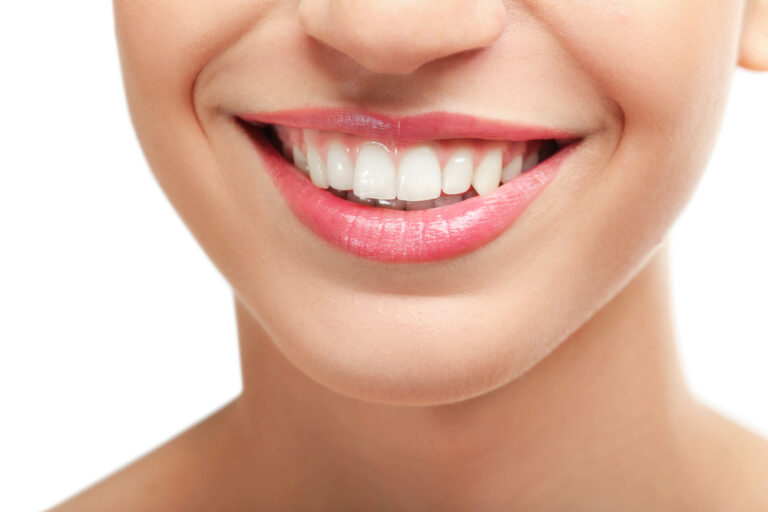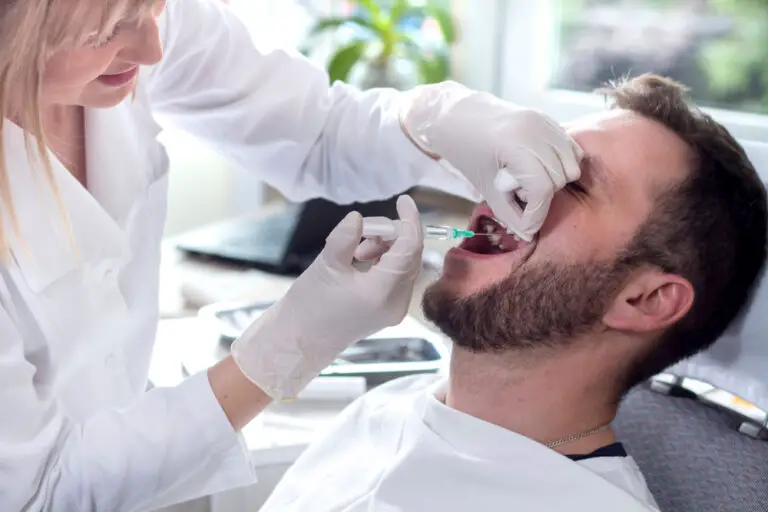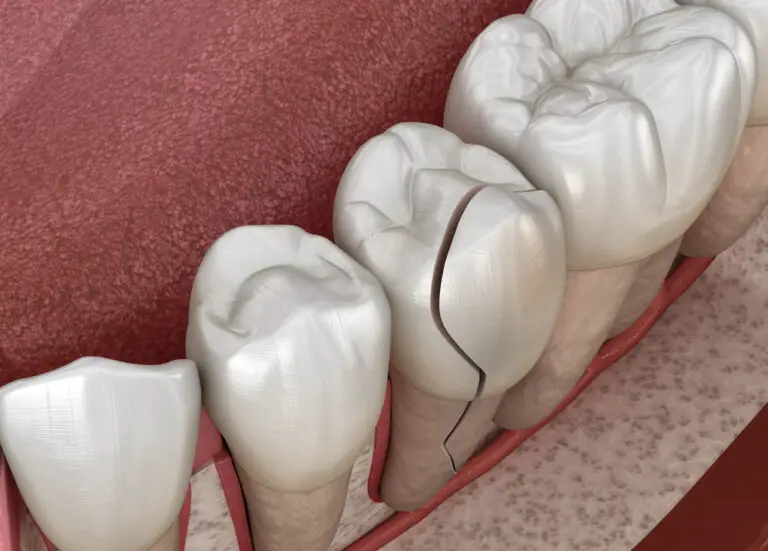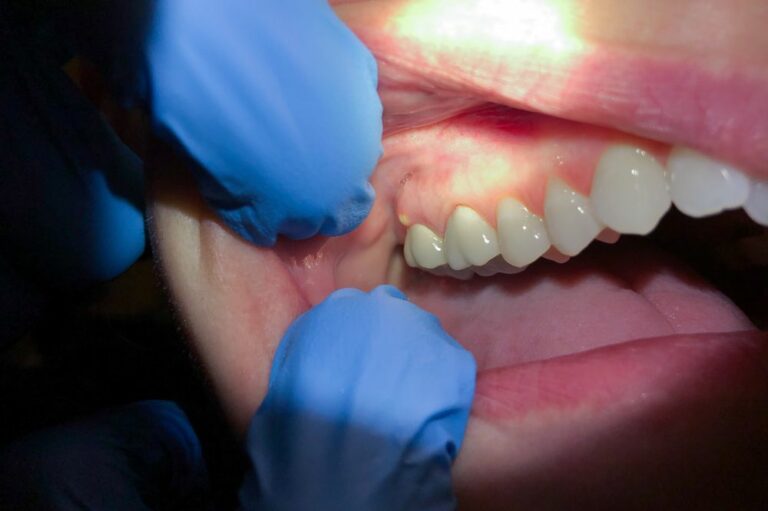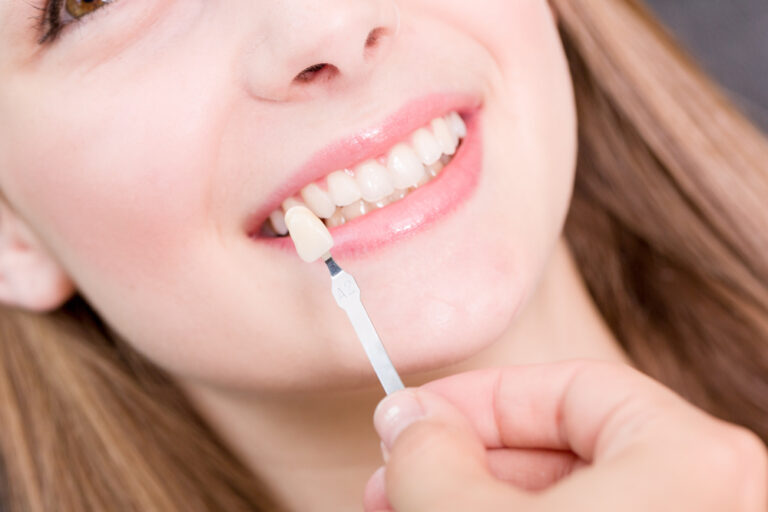The position and alignment of our teeth is something most of us take for granted. But teeth can and do change position over time for a variety of reasons. Understanding the factors that cause tooth movement and being aware of changes in your smile can help you get ahead of potential problems.
What Causes Teeth to Move?
Teeth are not permanently fixed in the jawbone. They can shift positions due to a number of influences:
1. Natural Developmental Changes
Teeth are continually erupting and settling into position from childhood through adolescence. Certain teeth may drift slightly as part of the maturation process. For example, front teeth often become more crooked as they grow in and the jaws develop. This is because the jaw growth is not perfectly symmetrical and uniform. Subtle differences in growth patterns can lead to crowding, spacing or misalignment of teeth over time.
2. Periodontal Disease
Inflammation and loss of bone around the teeth can cause increased tooth mobility. When periodontal ligaments and bone are compromised from gum disease, teeth become loose and may shift or drift out of position. This happens because the ligaments and bone keep teeth firmly anchored. As they weaken from bacterial infection and inflammation, that anchorage is lost. Teeth then have more room to move and may drift toward areas with more support.
3. Poor Oral Habits
Habits like thumb-sucking, tongue thrusting, lip biting, and nail biting can all apply abnormal forces to teeth over long periods of time, causing them to move out of place. Prolonged use of a pacifier or sippy cup after age 3 can also impact alignment by exerting pressure on the front teeth. Even if the forces are light, over months or years of repeated oral habits they can displace teeth.
4. Tongue Thrust
An abnormal tongue position when swallowing can exert pressure on teeth, gradually pushing them outward. This is known as tongue thrust and is often part of a pediatric speech condition called oral myofunctional disorder. When the tongue pushes forward instead of upward during swallowing, it can displace the upper and lower front teeth. This happens slowly over time, as thousands of swallows per day add up.
5. Uneven Jaw Growth
The upper jaw may grow longer or shorter relative to the lower jaw, affecting how the upper and lower teeth fit together. This can lead to gradual changes in tooth angulation as they shift position to maintain stable contact with opposing teeth. For example, if the lower jaw outgrows the upper, lower teeth may tilt inward while uppers flare outward. The teeth migrate in an attempt to preserve the bite relationship.
6. Bruxism
Clenching or grinding of the teeth puts substantial sideways forces on teeth over time, which can gradually alter their positions. This repetitive behavior is known as bruxism and often happens during sleep. Upper and lower teeth slide forcefully side to side against eachother, which loosens roots and causes gradual tooth migration.
7. Abnormal Bite
An overbite, underbite, open bite, or excessive overjet (space between upper and lower teeth) can cause teeth to move in an effort to maintain stable contact with opposing teeth. These bite problems may be due to inherent jaw discrepancies or harmful oral habits. Teeth constantly search for equilibrium and will shift position to achieve this balance.
8. Tongue Piercing
A tongue piercing puts chronic stress on the teeth each time the tongue moves and applies force to the jewelry. Over months and years, this can loosen teeth and alter alignment. The constant contact and pressure between jewelry and teeth pushes them out of position, usually flaring them outward.
9. Orthodontic Relapse
Teeth that were straightened with braces can slowly shift back toward their original crooked positions over time, particularly if retainers are not worn as prescribed. This happens because the periodontal fibers around teeth “remember” where they used to be positioned. Given enough time without retention, they can revert back to those positions.
Are Certain Teeth More Prone to Movement?
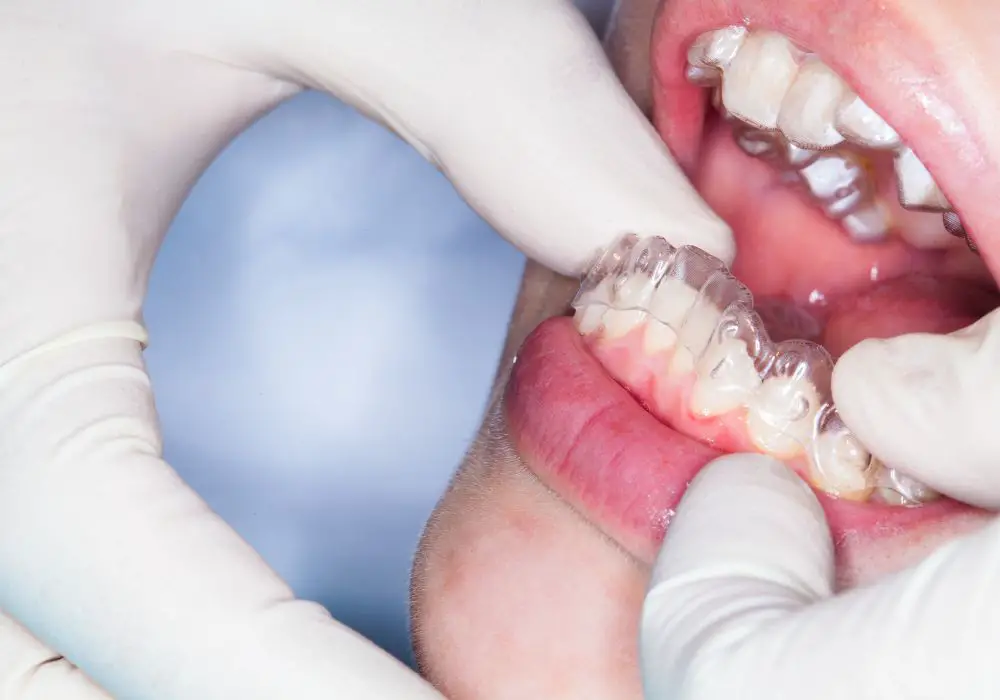
Yes, certain teeth are more susceptible to positional changes due to their placement in the dental arch and root anatomy:
- Front teeth – The front six upper and lower teeth are anchored in bone by just one root, making them more likely to drift or flare out compared to multi-rooted teeth. Their single root provides less stability.
- Back teeth – Molars and premolars have multiple roots, keeping them more stable and resistant to movement. But the second molars are the last permanent teeth to erupt, so they settle into position more slowly and may continue to change orientation.
- Canines – Canines are single-rooted like incisors but more deeply embedded in dense bone, offering them added stability. Still, they can flare or shift over time.
- Premolars – These transitional teeth only have two roots each instead of the three roots of molars. This makes them drift more readily than molars but less than front teeth.
Are Tooth Movements Always Permanent?
Not necessarily. Minor tooth movements may be temporary or intermittent depending on their cause. For example:
- Baby teeth that shift due to tongue thrusting can move back into better alignment once the habit is broken and pressure removed.
- Teeth loosened slightly by periodontal disease may tighten back up and shift less if inflammation is brought under control through dental treatment.
- Slight tooth flaring that develops during orthodontic treatment may resolve on its own after braces are removed.
However, significant tooth movement that occurs incrementally over a long period of time does tend to be permanent. When teeth are allowed to drift substantially out of position, they settle into their new locations and bone reforms around them. The periodontal ligaments also adapt to the new positions.
When Does Tooth Movement Become Problematic?
Tooth movements are usually not medically dangerous in themselves, but they can become problematic from an aesthetic or functional standpoint. Issues that may arise include:
- Crooked smile – Rotated, crowded, or gapped teeth detract from an attractive, aligned smile. This can cause self-consciousness about appearance.
- Malocclusion – Misaligned upper and lower arches or individual teeth lead to an improper bite relationship. This imbalance causes increased wear, chipping, dental fractures, and other problems over time.
- Difficulty chewing – Shifted teeth may not interact efficiently during chewing, affecting ability to bite off, tear and grind food. This can make eating challenging.
- Tooth damage – Teeth that drift out of alignment are at greater risk of fracture, abnormal wear, mobility issues and other damage. Their positions leave them more vulnerable.
- Speech effects – Improperly positioned teeth can interfere with normal articulation of certain sounds, especially lingual sounds like “s” and “z”.
- Jaw pain – Significant bite changes from tooth movement may lead to TMJ problems or muscle pain when chewing as joints are strained.
- Tooth loss – Excessively loosened teeth eventually require extraction if bone loss is too severe to save them.
What Is Tooth Movement in Orthodontics?

Orthodontists are able to therapeutically move teeth in planned directions using appliances that apply light, controlled forces to the teeth and jaw over an extended period of time. This process, known as orthodontic tooth movement, allows teeth to be gradually shifted into improved positions for optimal function and aesthetics.
Some examples of deliberate tooth movement that may be achieved orthodontically include:
- Closing excessive spaces or gaps between teeth
- Straightening significantly rotated or crooked teeth
- Correcting crowding by making more room in the dental arch
- Pulling back protruding front teeth or correcting an overbite
- Uprighting tipped molars or premolars
- Guiding erupted teeth into proper position relative to their opposing counterparts
Orthodontic tooth movement relies on the body’s natural healing response to gentle but constant mechanical stress placed on the bone, periodontal ligaments and other tissues surrounding the roots. Through gradual application of calculated force magnitudes and directions, bone remodels around the roots as they are shifted in a controlled manner. New bone fills in behind moving teeth while bone in front of them is resorbed.
Factors That Influence Tooth Movement Speed
The amount of time needed to move teeth orthodontically depends on several factors:
- Patient age – Younger patients generally achieve faster tooth movement since their bones naturally remodel more quickly. Adults over age 40 may have slower progress due to denser, less pliable bone.
- Bone density – Less dense, more porous bone allows for faster tooth movement while very dense cortical bone is more resistant to change. Certain medications, nutritional factors, and medical conditions can affect bone density.
- Tooth root shape – Short, blunt roots with flat surfaces tend to move faster than long, tapered, pointed roots. Blunt roots offer less resistance.
- Tooth position – Anterior teeth with only one root can move more rapidly than multi-rooted posterior teeth. Previously tipped teeth also respond quickly when being uprighted.
- Direction of force – Teeth move more readily when tipped or rotated as opposed to being shifted linearly through bone. Rotational and tipping movements require less bone remodeling.
- Amount of force – Adequate force must be applied to initiate movement without exceeding the pressure that would damage tissues or impede the process. Optimal forces fall in the range of .25 to 2 ounces per tooth.
- Consistency – Gentle, continuous forces tend to produce faster, safer tooth movement compared to heavy, intermittent forces. Moving teeth requires constant pressure.
- Oral health – Poor bone support and soft tissue inflammation due to gum disease or buildup can prolong movement. Good hygiene and oral health enable faster progress.
Can Tooth Movement Be Accelerated?
Orthodontists have developed certain methods and technologies to enhance the speed of tooth movement while minimizing side effects:
- Temporary anchorage devices – Strategically placed titanium mini-screw implants provide fixed anchorage, enabling better control and distribution of forces to specific teeth.
- Low-friction brackets – Reduced binding between archwire and brackets allows for light, continuous forces to be transmitted to teeth around the clock.
- Corticision – Small cuts in the gums and bone stimulate increased localized remodelling and healing factors in the direction of desired tooth movement.
- Low-level laser therapy – Certain wavelengths of light appear to gently stimulate cells involved in bone remodelling and inflammation, promoting faster tooth movement.
- Vibration – High frequency, low-magnitude vibration has been shown to accelerate orthodontic tooth movement in some cases. The mechanism may involve enhancing cellular activity in tissues.
- Medications – In limited cases, medications like AcceleDent or prostaglandins may be prescribed to increase cellular activity in tissues involved in tooth movement. However, side effects must be carefully considered.
However, safety is also paramount when attempting to speed tooth movement. Moving teeth too rapidly or intensely can damage bone, root surfaces, and other tissues. Your orthodontist can determine the safest, most effective acceleration options tailored to your specific treatment plan.
Maintaining Tooth Position After Orthodontic Treatment
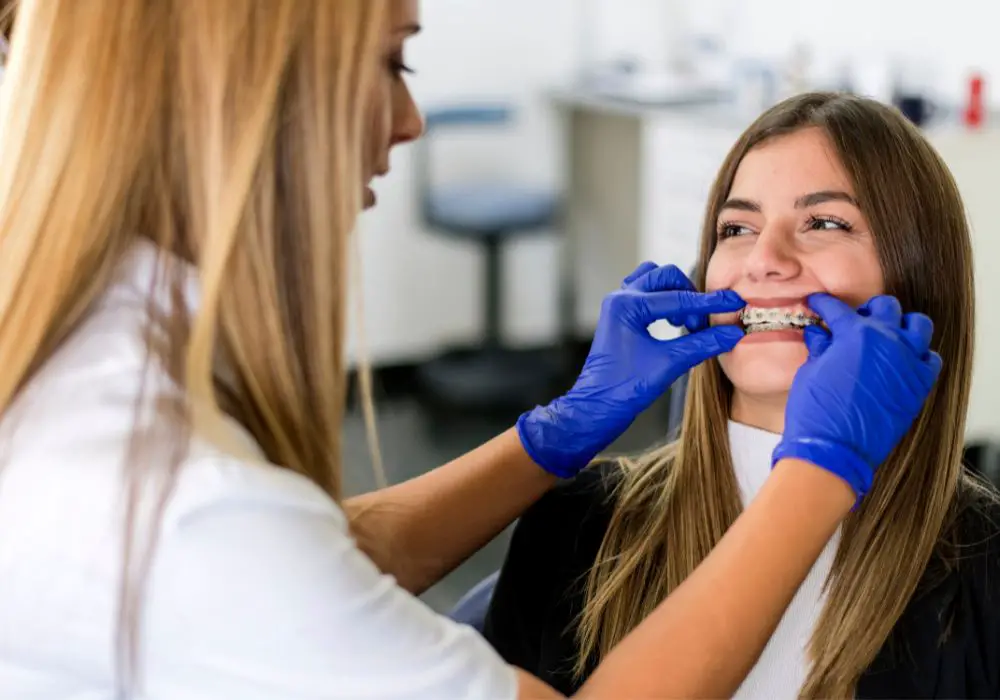
Once teeth have been straightened and aligned, it is crucial to retain their new positions while surrounding bone remodels around the roots. Fixed retainers and removable aligners or retainers are used to hold teeth in their corrected positions while the mandible and maxilla adapt.
Post-treatment retainers typically need to be worn for:
- 6-12 months – Full-time wear (removable only for cleaning) as initial bone reformation occurs
- 1+ years – Part-time nighttime wear to prevent minor relapse in certain individuals
- Indefinitely – Long-term daily or nightly wear as prescribed by an orthodontist in high-risk cases
Some patients are more prone to orthodontic relapse than others due to oral habits, growth and developmental patterns, elasticity of tissues, or periodontal health. Your orthodontist will advise you on the recommended duration of retainer use based on assessment of your individual relapse risk and treatment goals. With proper retention methods, your corrected tooth alignment and beautiful new smile can be preserved long-term.
Frequently Asked Questions
What age is tooth movement most common?
Tooth movement occurs most frequently in childhood and adolescence as primary teeth are lost, permanent teeth continue to erupt, and oral habits may persist. It is also common in adults later in life due to periodontal changes.
Do wisdom teeth cause other teeth to shift?
Partially erupted or impacted wisdom teeth often push against and crowd the teeth in front of them, especially the second molars. Removing wisdom teeth before completion of orthodontic treatment helps prevent this undesirable tooth movement.
Can Invisalign move teeth as well as braces?
Yes, Invisalign clear aligners have been proven to safely and effectively move teeth similarly to traditional braces. The aligners apply light, controlled forces to teeth to shift them gradually into place, just as braces do.
How long does it take for a shifted tooth to settle?
It can take several months for a slightly shifted tooth to regain firm bone support and settle into its new position. Severely moved teeth may never fully stabilize without orthodontic intervention.
Can a dental crown be shifted?
Dental crowns are cemented permanently onto teeth, so the underlying tooth itself would have to move in order for the crown to change positions. This is possible in cases of advanced gum disease, tooth fractures below the crown level, or excessive grinding habits over time.
Conclusion
Our teeth are remarkably adaptable structures that can move and realign in various directions over our lifetimes in response to different influences. While minor tooth movements are generally normal and not harmful, significant shifts that affect the bite or smile esthetics are best evaluated by an orthodontist. In most cases, undesirable tooth movement can be corrected through current dental techniques. Being mindful of changes in the positions of your teeth and addressing them early on can help prevent more extensive problems. With proper retainer wear after orthodontic treatment, you can avoid relapse and enjoy lifelong properly aligned teeth.


